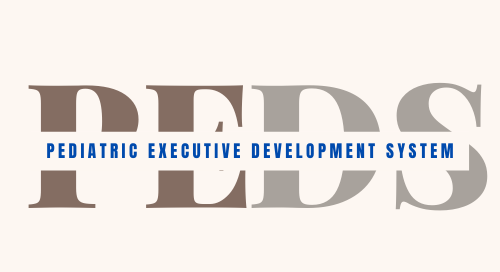Early Screening for Type 1 Diabetes: Understanding the Insurance Implications
When knowledge meets reality: navigating pancreatic autoantibody testing and insurance considerations for families
The Science of Early Detection
Pancreatic autoantibodies can appear remarkably early in childhood, sometimes as young as 9 to 18 months of age. These antibodies signal that the immune system has begun attacking the insulin-producing beta cells in the pancreas, setting the stage for what we now understand as a multi-stage autoimmune process leading to Type 1 diabetes (T1D).
The timeline is both predictable and cruel: while autoantibodies may appear in toddlerhood, the peak incidence of pancreatic failure requiring exogenous insulin typically occurs between ages 10 and 14. This creates a window of years, sometimes a decade, where families may know their child is progressing toward T1D but cannot prevent it.
For the 90% of children who develop T1D without a family history, early screening offers genuine clinical benefits: prevention of diabetic ketoacidosis (DKA) at presentation, avoidance of acute complications, and the opportunity to achieve better glycemic control from diagnosis. For families with a first-degree relative with T1D, the stakes are different—their children face a 15-fold increased risk, making screening results less surprising but equally significant.
The Insurance Reality Check
When parents consider autoantibody testing, insurance questions inevitably arise. Let's address the three main categories with clarity:
Health Insurance: Protected Territory
Under the Affordable Care Act (ACA), health insurance plans cannot exclude coverage for pre-existing conditions in any state or jurisdiction. A positive autoantibody test result will not affect your child's ability to obtain or maintain health insurance coverage. This protection is absolute and applies regardless of test results or the eventual diagnosis of T1D.
Disability Insurance: The Earnings Reality
Many parents ask about disability insurance for children who test positive for autoantibodies. Here's the fundamental issue: disability insurance benefits are typically calculated as 50% of actual earnings. Children have no earnings to protect.
The real value of disability insurance emerges when you're earning income and have financial obligations to cover. As a young adult, you're statistically more likely to become disabled than to die, making disability insurance crucial when you have a mortgage, student loans, or dependents relying on your income. But for children? The product simply doesn't align with the risk profile.
Life Insurance: Limited Pediatric Options
Pediatric life insurance products exist, but they're designed with different assumptions than adult policies. Most don't require health condition disclosures and typically offer modest coverage amounts, often around $50,000. These products serve more as future insurability guarantees than meaningful death benefits.
The real utility of life insurance emerges when you have significant debt and dependents who would need financial support if you died before they could become self-sufficient. For most families, this means life insurance becomes critical in your 20s and 30s, not in childhood. The benefit amount is really unlikely to help in any form to cover the mortgage expense for a young family.
The Post-Diagnosis Insurance Landscape
Once a child requires insulin therapy (Stage 3 T1D), the insurance calculus changes significantly. Life insurance premiums will be adjusted to reflect the medical reality that life expectancy for someone living with T1D is 10 to 16 years shorter than for someone without the condition.
This adjustment isn't punitive—it's actuarial. Insurance operates on risk assessment, and premiums are priced based on the probability that beneficiaries will receive benefits. While this reality is difficult for families to accept, it reflects the current medical understanding of T1D's long-term health impacts.
The Family History Factor
Insurance companies have long recognized the genetic component of T1D. When applying for coverage, family history questions reveal the 15-fold increased risk for children with affected first-degree relatives. In this context, early screening doesn't necessarily change the insurance company's risk assessment—they already know these children face elevated risk.
For the majority of families without a T1D history, screening provides valuable information that can improve clinical outcomes, even though it may eventually impact insurance considerations.
Making Informed Decisions
The decision to pursue autoantibody screening involves weighing clinical benefits against potential long-term implications. Consider these factors:
Clinical benefits of early screening:
Prevention of life-threatening DKA at diagnosis
Avoidance of acute complications at diagnosis
Opportunity for better glycemic control from onset
Access to disease-modifying medications that can prolong the need for insulin by an average of ~33 months
Time to prepare family and educational systems
Participation in prevention trials (where available)
Insurance considerations:
Health insurance remains protected under ACA
Future life insurance may be affected once T1D develops
Disability insurance becomes relevant only when earning income
Family history already signals elevated risk to insurers
The Bigger Picture
Early autoantibody screening represents a powerful tool for improving T1D outcomes, particularly in preventing the dangerous complications that can occur at diagnosis. While insurance implications deserve consideration, they shouldn't overshadow the significant clinical benefits for most families.
The key is making informed decisions with full awareness of both the medical advantages and the long-term realities of living with—or progressing toward—T1D. As our understanding of T1D prevention continues to evolve, these conversations will undoubtedly become more complex. Still, the fundamental principle remains: knowledge empowers better outcomes, even when it comes with difficult trade-offs.
For families considering screening, discuss both the clinical benefits and insurance implications with healthcare providers who understand your specific situation. The decision is deeply personal, but it should be made with complete information about both the medical and practical implications.
The landscape of T1D screening and prevention continues to evolve rapidly. This analysis reflects the current understanding and regulations; however, families should consult with healthcare providers and insurance professionals for guidance tailored to their specific situations.



